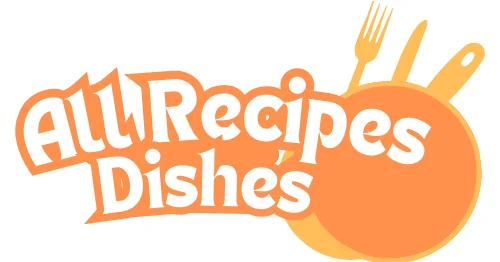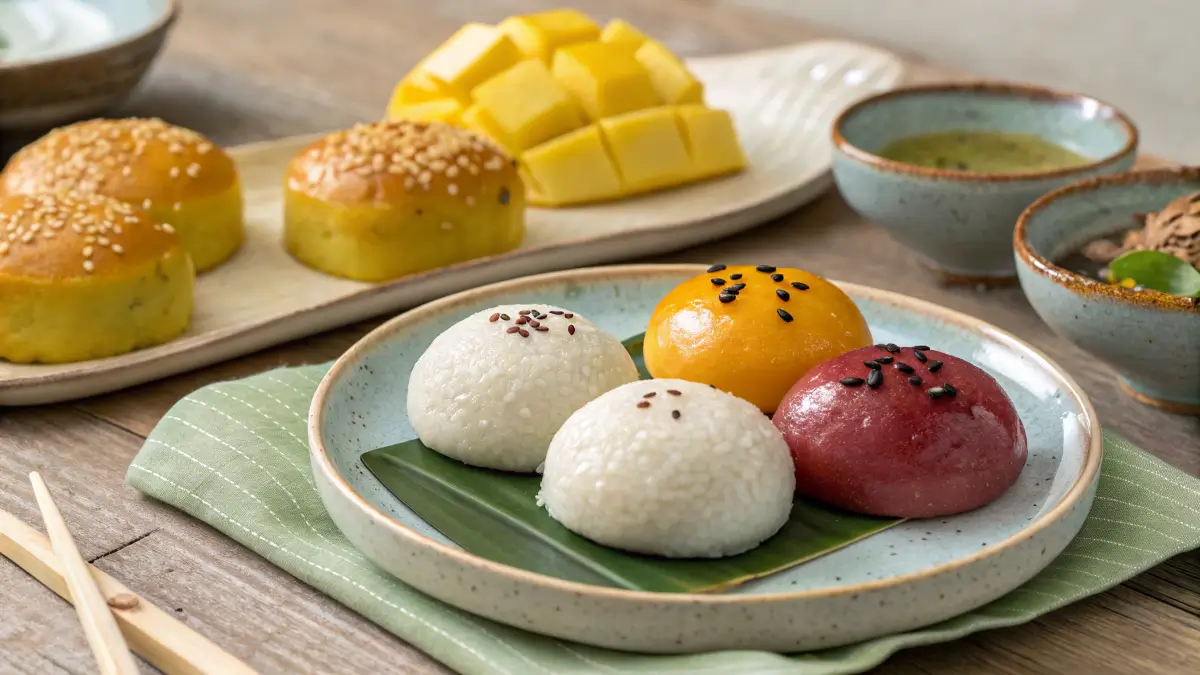Asian Desserts: The Ultimate Guide to Irresistible Treats from the East
Asian desserts are a vibrant blend of textures, flavors, and cultural stories. From Japan’s chewy mochi to Thailand’s sweet mango sticky rice, these treats are as beautiful as they are delicious. This guide dives deep into the most loved Asian desserts, gluten-free options, and how celiacs can enjoy these delights safely.
Table of Contents
Introduction to Asian Desserts
What Makes Asian Desserts Unique?
Unlike many Western sweets, Asian desserts often focus on lighter sweetness and natural ingredients. They rely heavily on rice, beans, coconut, fruits, and gelatinous textures. You won’t find much heavy frosting or sugar overload here.
Another standout feature? Many are served cold or at room temperature and often emphasize contrast in texture—like chewy mochi or soft tofu puddings paired with syrupy toppings.
From steamed buns to icy halo-halo, Asian sweets offer a whole new take on indulgence.
Popular Categories of Asian Desserts (Cakes, Mochi, Sweet Soups, Jellies)
Asian desserts span a wide range of formats. Some of the most beloved include:
- Rice-Based Cakes: Found in many cultures, these use rice flour or glutinous rice for their chewy, soft textures. Think Korean tteok or Filipino puto.
- Mochi & Glutinous Rice Balls: Japan’s mochi and China’s tangyuan are soft, chewy, and often filled with red bean or sesame paste.
- Sweet Soups & Syrupy Drinks: In Vietnam and China, desserts like chè or red bean soup are common after meals.
- Jellies & Custards: From coconut jelly to egg tarts, these are mild, soothing, and often coconut- or milk-based.
- Fried & Baked Treats: Such as sesame balls, banana fritters, and Chinese almond cookies, offering crunch and warmth.
Discover great ideas like our Gluten and Dairy-Free Dessert Ideas for dietary-friendly twists on traditional sweets.
Most Popular Asian Desserts Around the World
Iconic Treats Loved Across Borders
Asian desserts have exploded in popularity far beyond their origins. From food trucks in Los Angeles to bakeries in Paris, these treats are winning fans everywhere.
Mochi is a prime example. These soft, chewy rice cakes, often filled with sweet bean paste or ice cream, are now a freezer-aisle staple in U.S. grocery stores.
Mango Sticky Rice, a classic from Thailand, pairs fragrant sticky rice with fresh mango and coconut cream. It’s now a menu highlight at trendy fusion spots and Thai restaurants across the West.
Other international stars include bubble tea, egg tarts, and halo-halo. They’ve moved from local street carts to global dessert menus.
Influence of Asian Desserts in Western Cuisine
The growing love for Asian flavors has influenced Western baking and pastry trends. Coconut milk, matcha, and black sesame are now common in ice cream, cookies, and even cakes.
Chefs often blend East and West—like matcha cheesecake or mochi-filled brownies. The textures and flavors bring a refreshing twist to familiar sweets.
Even global fast-food chains have embraced the trend. McDonald’s and Starbucks have released region-specific items like matcha lattes and taro pies.
Looking for inspiration? Try our Easy Chocolate Desserts with an Asian twist.
10 Traditional Chinese Desserts You Should Try
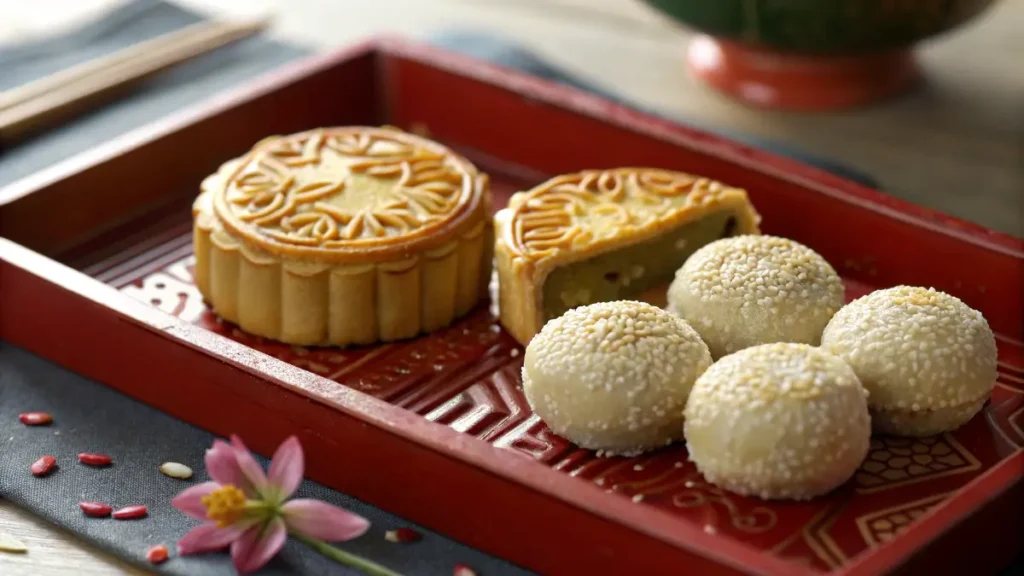
List of Authentic Chinese Sweets (Mooncake, Tangyuan, Red Bean Buns)
Chinese desserts blend tradition with delicate flavors. Many are tied to festivals and seasonal events. Here’s a quick list of 10 must-try classics:
- Mooncakes – Rich, dense pastries filled with lotus seed paste or red bean, often enjoyed during the Mid-Autumn Festival.
- Tangyuan – Glutinous rice balls filled with black sesame or peanut paste, usually served in a warm sweet broth.
- Egg Tarts – Flaky pastry shells with a silky egg custard center. A Hong Kong favorite.
- Red Bean Buns – Steamed or baked buns with sweet red bean filling. Found in dim sum spreads.
- Almond Jelly – A soft, milky jelly made with almond extract and often served with fruit cocktail.
- Sesame Balls (Jian Dui) – Crispy on the outside, chewy on the inside, filled with sweet bean paste and coated in sesame seeds.
- Snow Skin Mooncakes – A non-baked version made with glutinous rice, offering a chewy texture.
- Sweet Osmanthus Jelly – Light and fragrant, this jelly uses dried osmanthus flowers and wolfberries.
- Eight-Treasure Rice – A sticky rice pudding topped with various nuts, seeds, and dried fruits.
- Steamed Sponge Cake (Ma Lai Go) – Fluffy, light, and slightly caramelized. A staple at Cantonese restaurants.
Don’t miss our The Best Puff Pastry Dessert Recipes to explore more flaky, fusion-style ideas.
Cultural Meaning and Festival Ties to Chinese Desserts
Chinese desserts often hold symbolic meaning. Tangyuan represents family unity and is eaten during the Lantern Festival. Mooncakes celebrate reunion during Mid-Autumn.
These desserts aren’t just food—they’re tradition. They bring generations together at the table and pass down heritage through flavor.
Many are made at home for festivals, while others are bought fresh from bakeries during celebrations.
Thai Desserts and Their Gluten-Free Delights
Top Thai Gluten-Free Dessert Options (Mango Sticky Rice, Coconut Jelly)
Thai desserts are a haven for gluten-free eaters. Many rely on rice, coconut milk, and tropical fruits—no wheat needed.
Mango Sticky Rice (Khao Niew Mamuang) is the star. Sticky rice soaked in coconut milk, served with ripe mango. It’s naturally gluten-free and incredibly satisfying.
Coconut Jelly (Woon Maphrao) uses agar agar instead of gelatin. It’s smooth, light, and perfect for warm weather.
Sticky Rice with Banana (Khao Tom Mat) is another favorite. Wrapped in banana leaves, this steamed treat combines sweet rice and banana with no gluten in sight.
Other safe choices include Tapioca Pudding (Saku) and Pumpkin in Coconut Milk (Fak Thong Kaeng Buat). Both are creamy, dairy-free, and made without flour.
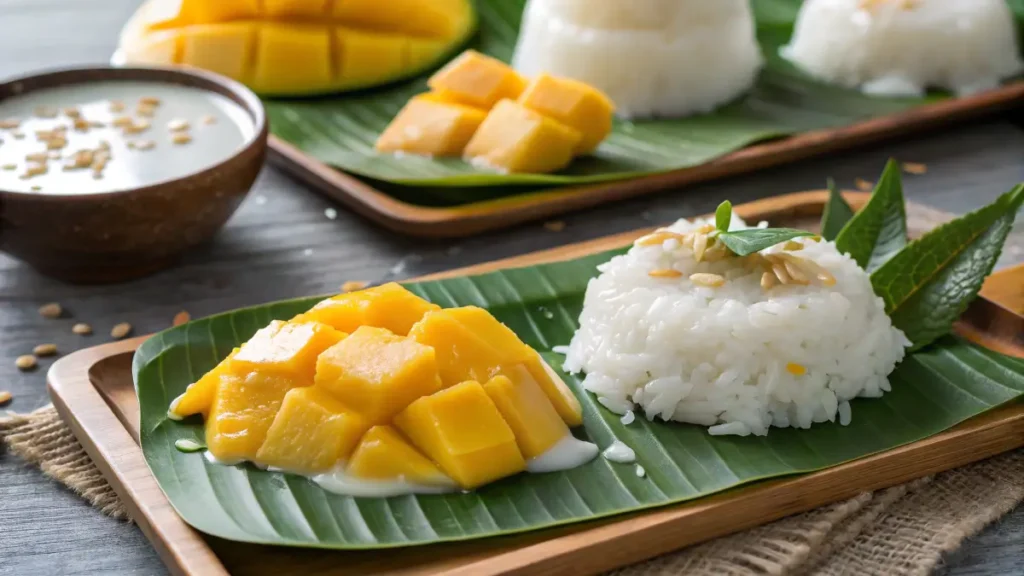
What to Look for on Thai Menus if You’re Celiac
Many Thai desserts are naturally gluten-free—but always ask. Soy sauce and malted sweeteners can sneak in.
Stick to rice- or coconut-based sweets. Avoid anything with fried dough unless confirmed gluten-free.
Also, watch for cross-contamination. In busy Thai kitchens, wheat flour is often used in savory dishes nearby.
Discover great ideas like our Gluten-Free King Cake that blends tradition and safety.
Exploring Gluten-Free Options in Asian Cakes
Are Traditional Asian Cakes Naturally Gluten Free?
Many Asian cakes use rice flour instead of wheat, making them a natural choice for gluten-free diets. Steamed rice cakes, like Bánh bò from Vietnam or Chinese fa gao, have long been enjoyed without gluten.
Another common ingredient is glutinous rice flour—despite the name, it’s 100% gluten-free. It’s called “glutinous” because of the sticky texture, not because it contains gluten.
Still, not all Asian cakes are safe. Some recipes, especially modern versions or bakery products, do use wheat flour for texture or structure. Always check labels or ask if uncertain.
Rice Flour, Tapioca & Other Gluten-Free Ingredients in Asian Baking
Asian desserts are rich in naturally gluten-free staples. Rice flour and glutinous rice flour are top choices for structure and chew. Tapioca starch is common in Filipino and Thai sweets, adding bounce and elasticity.
Coconut flour appears in Southeast Asian baking, lending a rich flavor and dense texture. Mung bean starch and cornstarch also pop up in jelly-based or steamed recipes.
These ingredients not only replace wheat—they define the unique textures that set Asian cakes apart. From chewy to bouncy to creamy, gluten-free ingredients are at the core of many authentic recipes.
Check out our Arroz con Leche Recipe to see how simple ingredients can create comforting, gluten-free desserts.
Navigating Asian Cuisine with Celiac Disease
Understanding Celiac-Safe Ingredients in Asian Recipes
The good news? Many traditional Asian ingredients are naturally gluten-free. Staples like rice, tofu, mung beans, tapioca, sweet potatoes, and coconut milk are safe for celiacs.
But you still need to be cautious. Ingredients like soy sauce, hoisin, or teriyaki often contain wheat. Unless labeled gluten-free, they’re not safe for celiac consumption.
Fermented sauces are common in Asian cooking, and most aren’t celiac-friendly. Swap them out for tamari or certified gluten-free versions when cooking at home.
Herbs, spices, and fresh vegetables—mainstays in many Asian cuisines—are naturally gluten-free and rarely a risk.
Tips for Eating at Asian Restaurants with Gluten Sensitivity
Eating out can be tricky, but not impossible. Here are tips to stay safe:
- Call ahead and ask about gluten-free options. Many Thai and Vietnamese spots are more flexible.
- Stick to simple dishes like grilled meats, steamed rice, and salads with oil-based dressings.
- Avoid fried items unless the oil and batter are confirmed gluten-free.
- Watch out for sauces. They’re the most common gluten carriers in Asian cooking.
- Bring your own soy sauce or tamari if needed—it’s an easy swap that can keep your meal safe.
Cross-contact is real in shared kitchens. Always ask about cooking surfaces and prep tools.
Don’t miss our Gluten and Dairy-Free Dessert Ideas for more allergy-friendly tips.
Rice Cakes: A Celiac-Friendly Staple?
What Are Asian Rice Cakes? Varieties Explained
Rice cakes are popular across Asia, and they come in many forms. Some are steamed and chewy, like Korean tteok. Others are crisp and puffed, like Japanese senbei or Chinese nian gao.
They can be sweet or savory, filled or plain. Most are made from glutinous rice or rice flour, which are gluten-free by nature.
Popular versions include:
- Mochi – Soft, stretchy rice dough, often filled with sweet bean paste.
- Korean Garaetteok – Long rice cylinders used in soups or stir-fried.
- Puffed Rice Cakes – Airy, crunchy snacks found in Korean and Japanese stores.
Safe Choices for Celiacs: What to Avoid
Not all rice cakes are safe for celiacs. Some use wheat-based sauces or fillings. Others might be dusted with barley malt or soy sauce for flavor.
Always check the ingredient list. If it says “glutinous rice” only, it’s likely safe. But look out for soy sauce, flour, or malt extract—these signal danger for gluten-sensitive eaters.
Stick to plain, unseasoned versions or those labeled certified gluten-free.
Making Asian Desserts at Home
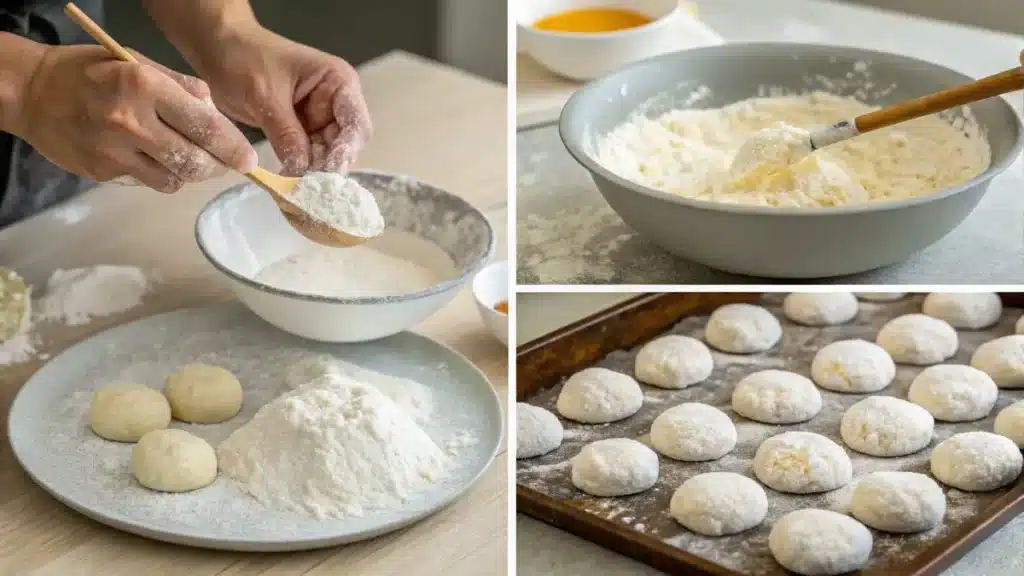
Simple Recipes for Beginners (Vegan, GF, No-Bake Options)
You don’t need a fancy kitchen to make authentic Asian desserts. Many recipes are beginner-friendly and use a few easy-to-find ingredients.
Try Mango Sticky Rice. Just soak sticky rice, steam it, and top it with sweetened coconut milk and mango slices.
For a no-bake treat, whip up Coconut Jelly with agar agar and fruit juice. It’s fast, dairy-free, and gluten-free.
Want chewy? Mix glutinous rice flour with water and a bit of sugar to make mochi. Roll into balls and dust with cornstarch.
Vegan options abound too. Most Asian desserts skip butter and cream. Use plant-based milks like soy, almond, or coconut for richness.
Where to Find Authentic Asian Ingredients in the U.S.
Asian ingredients are now widely available across the U.S. Start at local Asian supermarkets—look for brands from Thailand, Japan, Korea, or the Philippines.
Online stores like H Mart, Umamicart, and Weee! offer shipping nationwide. You’ll find essentials like glutinous rice flour, pandan extract, and agar agar.
Mainstream grocery chains also stock staples like rice noodles, coconut milk, and tapioca pearls.
Check out our guide to Delicious Easter Desserts Ideas that use some of the same pantry basics.
The Health & Nutrition Side of Asian Desserts
Are Asian Desserts Healthier Than Western Desserts?
Generally, yes—many Asian desserts are lighter and use fewer processed ingredients. You’ll often find lower sugar levels, minimal dairy, and no heavy frosting.
Take red bean soup or grass jelly with fruit. These desserts satisfy sweet cravings without the calorie load of cakes and pies.
Instead of butter, you’ll find coconut milk. Instead of refined sugar, palm sugar or honey. These choices offer more natural nutrients and a gentler glycemic impact.
Low Sugar, Dairy-Free, Vegan & Gluten-Free Innovations
Modern Asian recipes have evolved with dietary needs in mind. Vegan and gluten-free options are more common than ever.
For example, vegan matcha mochi uses coconut cream. Tapioca-based sweets are naturally dairy- and gluten-free.
Sweeteners like monk fruit and stevia now appear in many low-sugar spins on traditional favorites.
Asian food cultures prioritize balance—desserts included. You’ll find treats that not only taste good but feel good too.
Don’t miss our Easy Chocolate Desserts for rich yet simple recipes you can twist with Asian flavors.
Conclusion
Asian desserts are more than just sweet treats—they’re a journey into cultural flavor and innovation. Whether you’re celiac, vegan, or simply looking to try something new, the world of asian-desserts has something to offer.
From chewy mochi to silky coconut jellies, gluten-free delights are everywhere. And making them at home? Easier than you think.
FAQs
What are the most popular Asian desserts?
Some of the most popular Asian desserts include mochi, mango sticky rice, egg tarts, halo-halo, tangyuan, and red bean buns. These treats are known for unique textures and delicate sweetness.
What are 10 Chinese desserts?
Mooncake
Tangyuan
Egg Tarts
Red Bean Buns
Sesame Balls
Almond Jelly
Snow Skin Mooncakes
Steamed Sponge Cake (Ma Lai Go)
Eight-Treasure Rice
Sweet Osmanthus Jelly
What Thai desserts are gluten free?
Most Thai desserts are gluten-free by nature. Great examples include mango sticky rice, coconut jelly, pumpkin in coconut milk, and banana sticky rice. They’re made with rice, coconut milk, and fruit—no flour needed.
Are Asian cakes gluten free?
Many traditional Asian cakes are made with rice flour or glutinous rice, which are gluten-free. However, some versions include wheat flour. Always check ingredients or choose certified gluten-free options.
Can celiacs eat Asian food?
Yes, celiacs can eat Asian food—but with caution. Stick to dishes made with rice, vegetables, and gluten-free sauces like tamari. Avoid items with regular soy sauce, noodles, or breaded coatings unless certified GF.
Can you eat rice cakes if you have celiac disease?
Yes, most Asian rice cakes are safe for celiacs, especially those made with plain glutinous rice. But watch for flavored varieties that may contain soy sauce or wheat-based seasonings.
